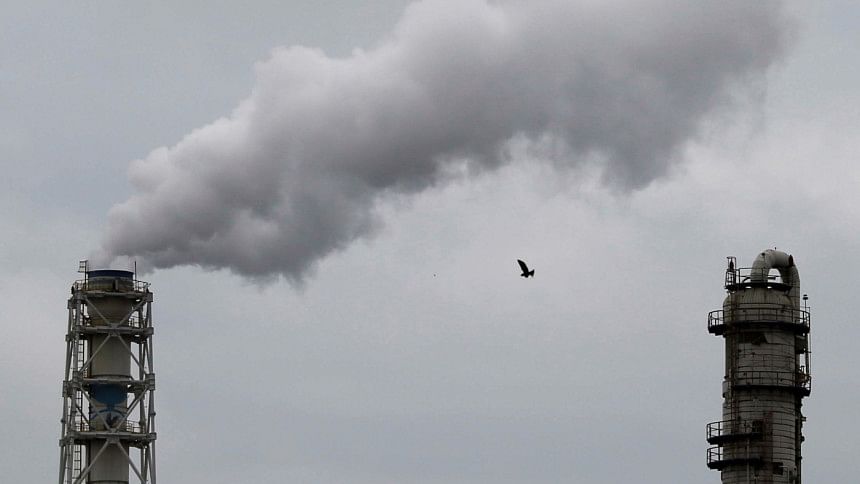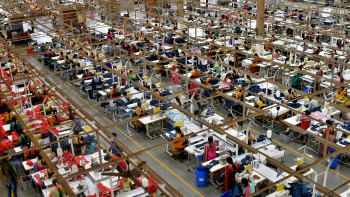Time to look into carbon capture and credit

As the world battles with climate change, new solutions have emerged to tackle what most believe to be one of its primary culprits: man-made carbon dioxide (CO2) emissions. This issue has come to the fore in recent months as many parts of the world have witnessed extreme temperatures, particularly southern Europe where temperature records have been shattered.
Among the solutions are carbon capture and storage technologies and carbon markets, which have garnered significant attention. Carbon capture and storage involves capturing CO2 emissions from industrial processes or power plants and storing them underground to prevent their release into the atmosphere. Carbon markets, on the other hand, create financial incentives for companies to reduce their carbon emissions by enabling them to buy and sell carbon credits.
Do such solutions have any potential in Bangladesh and its RMG industry? This is a significant question as many of our largest customers – fashion brands – are now urgently investigating ways to reduce and mitigate emissions in their supply chains.
One of the main advantages of carbon capture technologies is their ability to address emissions from existing facilities, which may otherwise be difficult to mitigate through other means. By implementing carbon capture at major sources of CO2 emissions, such as coal-fired power plants and heavy industries, these facilities can continue to operate while making substantial reductions in their carbon footprints.
Despite this promise, carbon capture faces several challenges that need to be addressed to ensure widespread adoption. One significant challenge is the high cost of implementing and operating carbon capture facilities. The energy-intensive nature of these technologies and the necessity for CO2 transport and storage infrastructure result in increased operational expenses. However, with advancements in technology and economies of scale, the costs are gradually decreasing, making this technology more economically viable.
Another concern relates to the long-term storage of captured CO2. Ensuring the stored carbon remains securely contained over extended periods of time is essential to prevent potential environmental risks.
Carbon markets, also known as cap-and-trade systems or emissions trading schemes, create financial incentives for companies to reduce their carbon emissions. Under a carbon market, governments or international bodies set a cap on the total amount of carbon emissions allowed within a specific time frame. Companies that emit greenhouse gases (GHGs) are issued a limited number of carbon credits that correspond to their allocated emission allowance.
If a company reduces its emissions below its allotted limit, it can sell its surplus carbon credits to other companies that have exceeded their emission limits. This creates a market for carbon credits, where companies that can achieve emission reduction more cost-effectively can sell their excess credits to those facing higher abatement costs.
Carbon markets offer several advantages as a tool for climate mitigation. They provide economic incentives for businesses to invest in cleaner technologies and practices. By putting a price on carbon emissions, companies are encouraged to internalise the environmental costs associated with their activities, making them more conscious of their carbon footprint.
Secondly, carbon markets foster innovation. As companies strive to lower their emissions to gain a competitive edge and sell surplus credits, they are incentivised to explore new technologies and strategies to reduce their carbon footprint. This leads to the development and deployment of cleaner, more sustainable practices across various industries.
Furthermore, carbon markets can be implemented on a national or international scale, allowing for collaboration between countries to collectively address the global challenge of climate change. By facilitating emissions trading across borders, carbon markets promote a coordinated effort to combat climate change, ensuring the most efficient use of resources and emissions reductions.
Carbon capture and carbon markets are two critical components in the fight against climate change. However, a concerning trend has also been observed, where the carbon credits generated by developing countries are disproportionately benefiting developed nations, further exacerbating global inequalities.
Under the Paris Agreement, developing countries have been encouraged to invest in sustainability initiatives, often with financial assistance from the Green Climate Fund or through local debts. While these investments hold the promise of fostering environmental progress, the issue lies in the distribution of benefits. Corporations from developed countries, leveraging their financial prowess and influence, tend to take advantage of carbon credits earned by projects in developing countries, effectively depriving these nations of their rightful share in the fight against climate change.
This imbalance creates a concerning scenario where developed countries reap the rewards of carbon credits without adequately supporting the sustainable development of developing nations like Bangladesh. It is crucial for policymakers in developing countries to be aware of this dynamic and advocate for fair and equitable distribution of carbon credits generated within their borders. Additionally, the global community must work collaboratively to address this issue and ensure that climate solutions are genuinely inclusive and benefit everyone, especially those facing the greatest challenges in adapting to climate change, such as our country.
Mostafiz Uddin is managing director of Denim Expert Limited. He is also the founder and CEO of Bangladesh Denim Expo and Bangladesh Apparel Exchange (BAE).

 For all latest news, follow The Daily Star's Google News channel.
For all latest news, follow The Daily Star's Google News channel. 











Comments